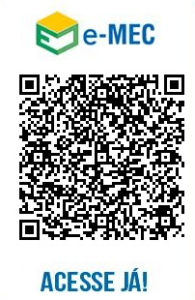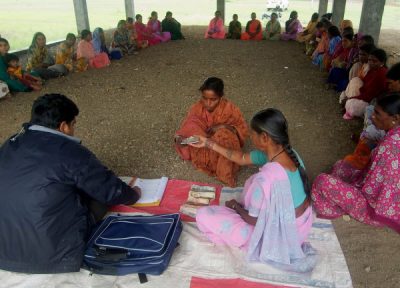


Responsible researcher: Silvio da Rosa Paula
Article title: THE MIRACLE OF MICROFINANCE? EVIDENCE FROM A RANDOMIZED EVALUATION
Article authors: Abhijit Banerjee; Esther Duflo; Rachel Glennerster; Cynthia Kinnan;
Location of intervention : Hyderabad, India
Sample size : 104 poor neighborhoods, 52 treated neighborhoods and 52 controls, a total of 6,863 households
Big topic : Finance
Type of intervention : Access to microcredit for poor families
Variable of main interest : Access to microcredit
Evaluation method : Experimental Evaluation (RCT)
Assessment Context
For economist Muhammad Yunus, access to microcredit can transform the lives of a large part of the poor population, generating opportunities. Muhammad Yunus, who was born in Bangladesh, became known internationally as the “banker of the poor” for creating the largest social microcredit bank in the world, a contribution that earned him the Nobel Peace Prize in 2006. Grameen Bank is an institution that lends small amounts without bureaucracy, especially to poor women, people who would hardly have access to the conventional banking system and, consequently, would end up in the hands of loan sharks.
Despite all the optimism generated by microcredit, some negative effects began to emerge, such as, for example, the increase in the number of suicides linked to debt, employees accusing microcredit institutions of obtaining high profits, doubts about the true mission of these institutions and about the power transformation that access to the service can have in reducing poverty. Given this, the question that remains is whether microcredit is really capable of reducing poverty.
In this way, economists Abhijit Banerjee and Esther Duflo, winners of the 2019 Nobel Prize in Economics [1] , focus on the issue in the article, in free translation “The miracle of microfinance? Evidence from a randomized trial.” The authors evaluate the effects of access to microcredit, producing important results for understanding the impacts that formal loans can have on the poorest population.
Intervention Details
The experiment was carried out in the city of Hyderabad, the fifth largest city in India and the capital of the former state of Andhra Pradesh. The research included the participation of the microfinance center (CMF), the Financial Management Research Institute (IFMR) and the for-profit financial institution Spandana.
The main product offered by Spandana is group lending, first introduced by Grameen Bank. The groups are made up of 6 to 10 women, for a total of 25 to 45 groups that add up to a loan worth US$200 PPP [2] . The interest rate charged is 12%, an interest rate considered low by typical microfinance standards, even when compared to Grameen Bank . The repayment time for principal and interest is 50 weeks and at the end of the loan, group members who have honored their debts become eligible for a second loan of up to 240 dollars and so on up to a maximum of 400 dollars. Therefore, to be eligible for loans, customers must: (i) be female, (ii) be between 18-59 years old, (iii) Live in the same neighborhood for at least one year, (iv) have valid identification and residential proof and (v) at least 80% of the women in a group must own their home. It should be noted that the house is not used as a guarantee, being just a way for the institution to form a group of people with less chance of migrating to other places.
Methodology
To understand how the assessment of access to microcredit for the poor population was carried out, we need to understand the method used. The methodology used by the researchers is called "randomization", an experimental approach commonly used in pharmaceutical research. For example, part of a group of patients is randomly selected to receive a new medicine, this group is called the “Treated Group”, the remaining patients receive the placebo, these will be called the “Control Group”. At the end of treatment, data is collected from both groups and a statistical evaluation of the medication's efficiency is made. In this method, the random selection process is essential, as it is what will guarantee that both groups are comparable, that is, that on average the “Treated Group” and the “Control Group” present the same characteristics, and the only thing that What differentiates them is that one group received the medicine and the other the placebo.
In 2005, when the experiment began, some microfinance institutions had already been established in some districts of Andhra Pradesh, but most organizations had not yet started working in the capital Hyderabad. The company Spandana, aware of the opportunity, selected 120 neighborhoods in the capital where there were no other microfinance institutions yet. In this selection, neighborhoods with a high concentration of workers who move frequently were avoided.
In this context, each neighborhood underwent a prior survey, gathering information on family composition, education, employment, expenses, loans, savings and any businesses operated by the family or interrupted in the last year. A total of 2,800 families were interviewed and after the research, 16 neighborhoods were discarded, due to the large number of migrant workers without families. The remaining 104 neighborhoods were grouped into similar pairs based on their average per capita consumption and debt per household. Subsequently, one neighborhood from each pair was randomly assigned to receive a branch of the institution, giving rise to the “treated group” and the rest of the neighborhoods formed the “control group”, those that did not receive the branch.
In the years between 2006 and 2007, the company Spandana began to progressively operate in the 52 treatment areas, where implementation took place on different dates in the different neighborhoods. At the beginning of 2007, the first census was carried out in each neighborhood, and subsequently a second census was carried out between 2009 and 2010. With the information collected, it was possible to assess whether the residents of the neighborhoods belonging to the treated group, that is, those neighborhoods who received the Spandana branch, showed statistically significant differences from the control group.
Result
The results found in the 18-month period indicate that the demand for microcredit was only 26.7% of families and not 80% as expected by the Spandana institution. Despite this, there was a reduction in informal loans, indicating a migration to microcredit. Furthermore, there was no positive impact on monthly consumption and consumption of non-durable goods, however, it had a positive effect on the consumption of durable goods. After 18 months of access to microcredit, families are no more likely to be entrepreneurs, however, they invest more in the businesses they own (or in those they start) compared to the control group.
In the long term, after 36 months of access to microcredit, the number of households taking out a loan increases to 33%, however, it is still well below the demand expected by microcredit institutions. This result is similar to that found by two other randomized interventions with a similar design that occurred in Mexico and Morocco.
Even in the long term, microcredit made it possible to expand some businesses and create others, but overall it was not enough to lift their owners out of poverty. The profits from these businesses only increased for companies that were already more profitable. Furthermore, access to microcredit does not appear to have an effect on education, health or women's empowerment in the short or long term. The results differ from study to study on these outcomes, but as a whole, they do not show a drastic change in basic development outcomes for poor families.
Therefore, the study concludes that access to microcredit does not change the state of poverty, but it does affect the supply of work, since families allocate more time to their own businesses, exchanging the hard work that was offered elsewhere, even if their small businesses are less likely to have an employee and are less profitable. Finally, access to microcredit affects the consumption structure of families that invest in durable goods for the home, restricting their consumption of unnecessary expenses.
Public Policy Lessons
In a general analysis, the evidence indicates that access to microcredit does not reduce poverty, but it is worth highlighting that the researcher Abhijit Banerjee himself, in an interview with IPEA, does not rule out the use of microcredit as a useful tool for the poor, in order to achieve their consumption projects, such as buying a TV or repairing their homes, as long as they are accompanied by good regulation.
Reference
BANERJEE, Abhijit et al. The miracle of microfinance? Evidence from a randomized evaluation. American Economic Journal: Applied Economics, vol. 7, no. 1, p. 22-53, 2015.
[1] Michael Kremer was also a 2019 Nobel Laureate in economics for his experimental approach.
[2] Exchange rates adjusted by World Bank 2007 purchasing power parity (PPP).